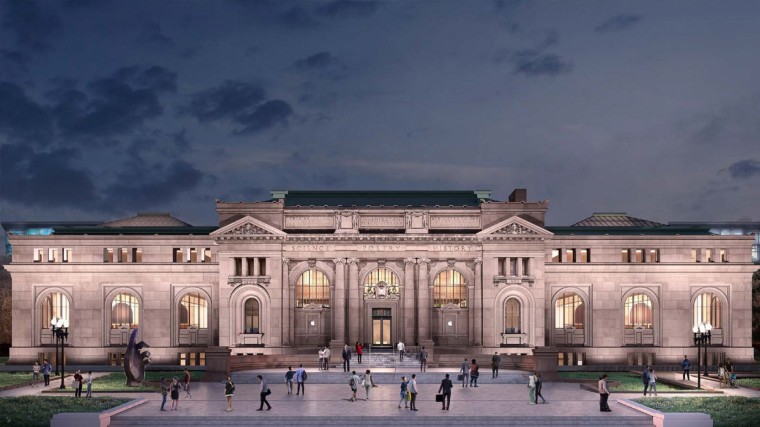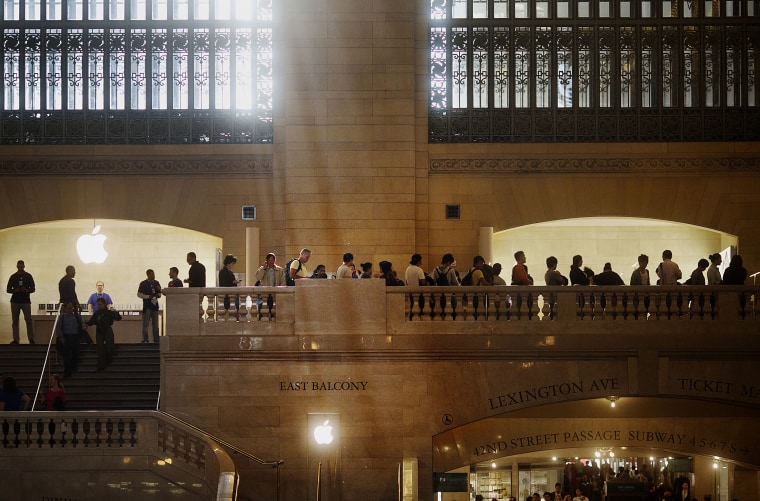Every month it seems another retailer is shutting down for good. Toys R Us and Sears filed for bankruptcy in 2018, closing over 1,000 stores between them; Best Buy’s mobile shops are being shuttered, as are Starbucks’ Teavana locations. Collectively, other major retailers are closing hundreds of stores. Yet, in the face of the retail apocalypse, Apple’s brick and mortar stores are thriving.
The tech giant’s retail stores consistently top the rankings for highest earnings per square foot of real estate, beating out jewelry and fashion stores. E-commerce makes shopping easy, so what sets Apple apart? The shopping experience.
E-commerce makes shopping easy, so what sets Apple apart? The shopping experience.
In 2014, Apple poached Angela Ahrendts from luxury fashion brand Burberry to chart the future of Apple Stores. She began to discuss her new strategy in 2016 before an official announcement at the company’s September 2017 keynote: Apple stores, around 400 of them, will be redesigned to become “town squares” where people can use free wifi, learn more about their Apple products and hang out with friends.
Ahrendts’ town square strategy isn’t wholly bad. Apple is setting out to provide better service, more classes, and a better in-store experience, which is exactly what customers want. However, the company is also using its massive cash pile — estimated at $267 billion in May — to buy its way into historical buildings and expand its footprint into cherished public spaces. And that’s not as popular a proposition.
SIGN UP FOR THE THINK WEEKLY NEWSLETTER HERE
Apple’s retail stores haven’t commonly been met with backlash, and where they have, the opposition has tended to be minor. There was some anger over Apple’s Grand Central store in 2011, and state authorities later confirmed Apple was given a sweetheart deal by the transit authority; it is the only retailer not paying a percentage of its revenue in rent. But whereas the station is a commercial space, some of the other prominent locations Apple has targeted as part of its town square strategy are not, forcing residents to confront the question of whether they want one of the largest publicly traded companies in the world to invade their public space — and there’s been a notable divide between the United States and other parts of the world.

Apple’s planned town square store in Washington D.C.’s Carnegie Library fits this category, but there’s been little effort to get the city to reverse its decision. The cultural landmark has been largely out of use since the 1970s when a larger library was built to replace it. The building's sole occupant, the Historical Society, will remain once Apple opens its store. CityLab’s Kriston Capps noted that some people are upset that the District justified putting an Apple Store in the library by calling Apple a “cultural organization” despite the experiences Apple intends to offer being framed around its products, but the larger question of whether a public space should be handed over to Apple to become a commercial enterprise has been largely ignored.
Indeed, the attempted (and sometimes successful) invasion of public space is the real issue with Apple’s town square concept. Ahrendts and Apple’s executive team are not idiots; they understand the value of connecting landmarks to the company’s image and see the branding and advertising opportunities associated with taking over highly visible, highly trafficked areas. But after decades of standing by as public spaces have been degraded and privatized as successive waves of tax cuts left governments unable to maintain them, maybe it’s time for that to change. The residents of other cities certainly think so.
The attempted (and sometimes successful) invasion of public space is the real issue with Apple’s town square concept.
In Melbourne, Apple tried to push its way into Federation Square, the city’s main public gathering space that houses a number of cultural institutions and serves as a focal point for local events, national celebrations and protests. The plan was announced right before Christmas 2017 after more than a year of secret negotiations with the state government, and the backlash was fierce. A resident told The Age that the plan was “taking a cultural space and commercialising it,” and even a right-wing politician said that Fed Square was “the people’s place,” not a place for an Apple store.
Apple responded by redesigning the store, but the primary issues remained: People didn’t want it in their public gathering space, nor did they support the demolition of the Yarra Building, home to a unique collection of Aboriginal cultural pieces, that would be required to accommodate it. In October, Heritage Victoria recommended the square be given heritage designation, which would throw up more roadblocks for Apple; in November, the state premier announced the store’s opening would be pushed back a year. Local writer James Norman wrote that “Apple’s incursion into Melbourne’s cultural heart mirrors the insidious creep of commerce into pseudo-public spaces all over the world.” That fight continues.
Activists in Stockholm have been more successful. Apple targeted a key public space for a new town square in the Swedish capital. Kungsträdgården (King’s Garden) is one of the city’s oldest and most visited public parks. Apple wanted to replace a restaurant on one end of the park with an elevated store that would have dominated the space, and residents were furious.
Unlike in Melbourne, the city government held a public consultation and almost every response was negative.
Unlike in Melbourne, the city government held a public consultation and almost every response was negative. Apple redesigned the store in response to criticism to reduce its size and hide the facade with trees, but after elections in September, Stockholm’s new “green-blue” coalition government announced it would block the proposal. Apple was welcome to open a new store in the city, but not in the park.
Critics in Washington, D.C., Melbourne and Stockholm all allege that Apple is adding nothing to the public spaces it is colonizing, and instead merely appropriating these iconic and historic areas for commercial ends. The company may be renovating the historical buildings it occupies, but many of those structures have only fallen into disrepair because the tax cuts these very companies and their shareholders fought for left governments starved of revenue and unable to maintain them. A space is about more than its architecture; commercialization robs public space of its focus on equity and accessibility, and that’s what residents are pushing back against.
Public spaces and the private counterparts can look quite similar to one another, especially as the concept of the “third space” that made Starbucks so successful is adopted by even more brands, but whereas public spaces are designed to serve the whole community, private spaces are made for those who will generate a profit.
Think back to the Apple store in Washington, D.C.’s Carnegie Library: if the city was serious about creating experiences for residents, it could have funded an arts’ center that would have offered programs for everyone, focusing, in particular, on underserved residents like young people and the poor. Instead, the “experiences” offered by Apple are designed around its pricey products, placing a high barrier to entry that will exclude those who most need access to the education and community that public spaces can provide. And in a space that was purposefully built to provide free access to knowledge for the whole of the community, it just seems wrong to let Apple take over.
Public space is valuable. Green space has been shown to make us calmer. But will we get the same benefits if those public spaces and are refocused around commercial enterprise? There are plenty of places for Apple to build — but even die-hard Apple fans need to be able to take a breath without always being sold something.

